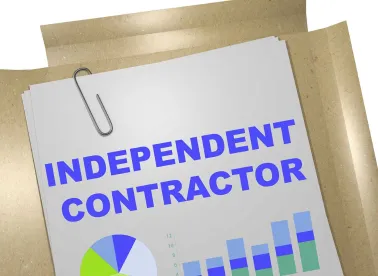In a case involving a drywall installation business, the New Jersey Supreme Court has provided helpful tips for employers to properly classify construction workers as independent contractors or employees and to accurately assess when to owe worker contributions to the unemployment compensation and temporary disability benefit funds.
Background
East Bay, a drywall installation business in New Jersey that obtained workers’ services to perform drywall installation, compensated certain installers and issued them IRS Forms 1099 for tax reporting as independent contractors. The employer’s rationale for this classification was that all of the drywall work was performed by its installers at locations determined by the builder which were not owned or controlled by the company, East Bay did not control or direct the installers’ performance, the installers were not instructed on how many persons they should use to complete the job in the timeframe provided by the builder, and the installers were not supplied with any tools beyond raw materials, such as sheetrock and tape, and brought to the job sites their own ladders, scaffolding, stilts, chalk lines, electric tools, planks, and other tools required to complete the work.
After an audit conducted by the Department of Labor and Workforce Development, the auditor concluded that East Bay erred in classifying certain installers as independent contractors and owed the Department for unpaid contributions to the state unemployment and temporary disability compensation fund for these misclassified employees. East Bay challenged the auditor’s findings of misclassification with respect to the business entities, and the case was tried in the Office of Administrative Law. In addition to other findings, the Office of Administrative Law determined that the installers who had formed and operated corporations or limited liability companies during the audit period could not be deemed employees of East Bay, and thus, were independent contractors. The Department’s commissioner disagreed with this determination and found that all the installers at issue were misclassified as independent contractors.
On appeal, the Appellate Division applied the factors of the ABC test to the disputed installers and affirmed in part and reversed in part the commissioner’s classification decision. However, the New Jersey Supreme Court concluded that all the installers in question had not been properly classified as independent contractors due to insufficient information to prove the workers’ independence under prong C of the ABC test. East Bay Drywall, LLC v. Department of Labor and Workforce Development, No. A-7-21 (Aug. 2, 2022).
ABC Test
New Jersey follows the stringent ABC test (Unemployment Compensation Law, N.J.S.A. § 43:21-19(i)(6)(A)-(C)) to determine the proper classification of workers as employees or independent contractors.
Under the ABC test, a worker is considered an employee unless an employer can satisfy all three of these criteria:
-
Such individual has been and will continue to be free from control or direction over the performance of such service, both under his contract of service and in fact; and
-
Such service is either outside the usual course of the business for which such service is performed, or that such service is performed outside of all the places of business of the enterprise for which such service is performed; and
-
Such individual is customarily engaged in an independently established trade, occupation, profession or business.
The failure to prove one of the three criteria results in a worker being classified as an employee, rather than an independent contractor.
New Jersey Supreme Court’s Decision
In rendering its decision, the state Supreme Court highlighted certain key inquiries to be made by an employer to determine whether the worker is engaged in an independently established business for purposes of prong C of the ABC test. As to each construction worker or subcontractor the employer intends to classify as an independent contractor, the employer must examine:
-
Whether the worker can maintain a business independent of and apart from the employer?
-
Whether the worker will have a business, trade, occupation, or profession that will clearly continue despite termination of the challenged relationship?
-
Whether the worker’s business is “stable and lasting,” and capable of “surviv[ing] the termination of the relationship”?
If the worker can meet these factors, the findings will assist in supporting a position that the worker meets prong C of the ABC test, showing an independently established business. In this regard, the Court explained, if the worker “would join the ranks of the unemployed” when the working relationship ends, the worker cannot be considered independent under prong C. The Court further identified additional factors to be considered by an employer when evaluating a worker’s ability to maintain an “independent business,” including:
-
“Duration and strength of the [workers’] businesses”;
-
“The number of customers and their respective volume of business”;
-
“The number of employees”;
-
“The extent of the [workers’] tools, equipment, vehicles, and similar resources”;
-
“The amount of remuneration each [worker] received from [the employer] compared to that received from other [employers]”;
-
Whether the worker maintains telephone listings or business stationary;
-
Who benefits from the goodwill generated by the company;
-
Who possesses the worker’s business inventory;
-
Who bears the risk of loss;
-
Whether the worker can accept or decline other positions or work; and
-
Existence of certificates of insurance and business entity registration.
The Court emphasized that information such as that obtained through a fact-based analysis utilizing these various factors will assist the employer in demonstrating that workers or business entities being classified as independent contractors are more than just “a business in name only.”
Companies seeking to engage independent contractors are encouraged to confer with counsel on worker classification to ensure legal compliance.





 />i
/>i

